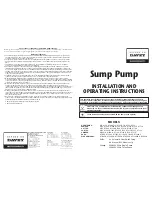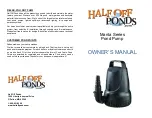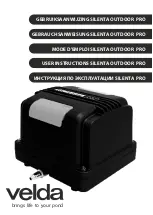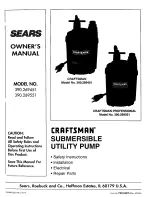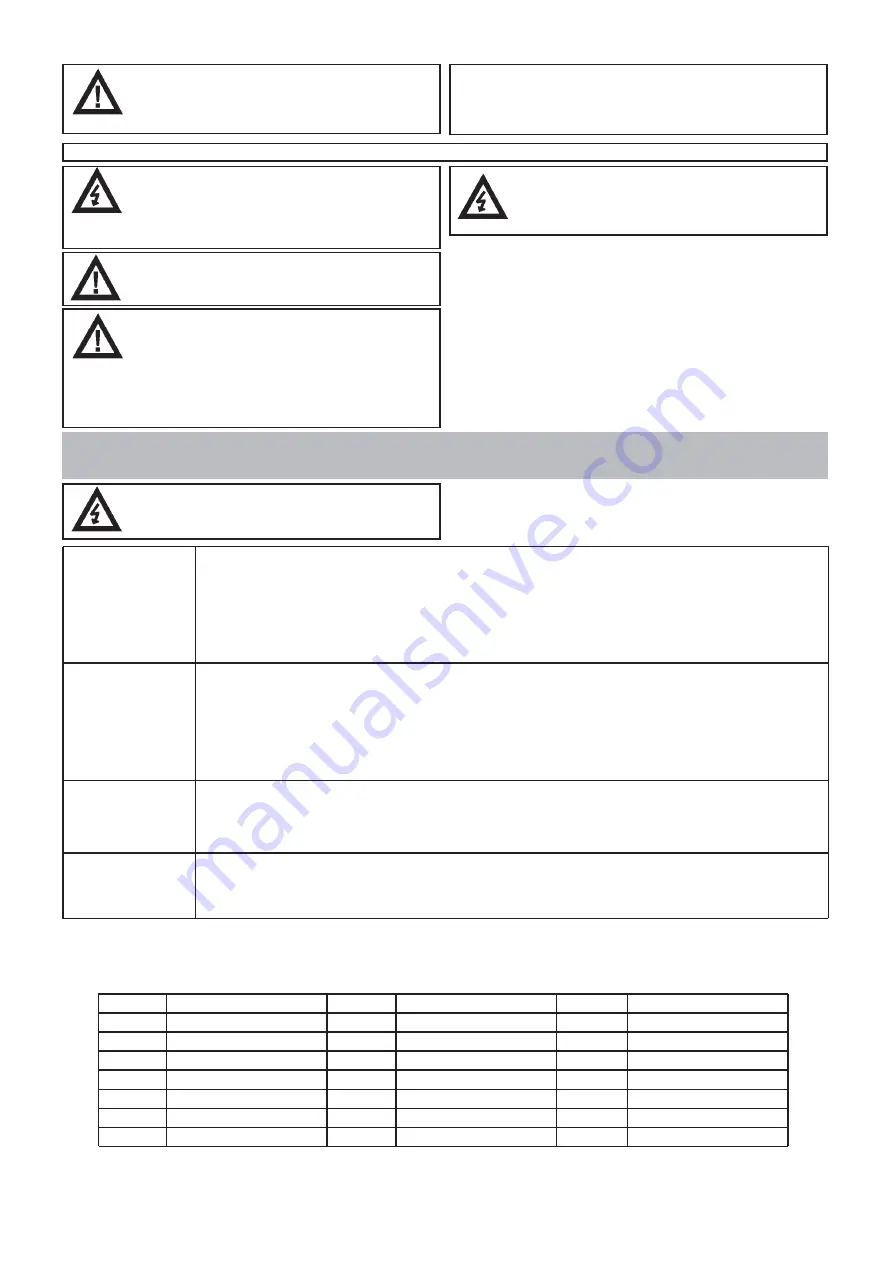
Replacing the impeller
NOTE!
Old oil should be entrusted to an oil disposal company in accordance with
local regulations.
The Packing (Gasket) and the O-ring for the oil plug must be replaced with
a new part at each oil inspection and change.
CAUTION!
In the event of inward leakage, the oil housing may be
pressurized. When removing the oil plug, hold a piece of cloth
over it to prevent oil from splashing.
CAUTION!
Before disassembling and reassembling the pump, be sure
that the power supply is disconnected, and remove the
cabtyre cable from the terminal board. To prevent serious
accidents, do not perform a conduction test during disassembly and
reassembly.
CAUTION!
Be sure to perform a trial operation when starting the pump
after a reassembly. If the pump was assembled improperly, it
may lead to abnormal operation, electrical shock, or water
damage.
CAUTION!
A worn impeller often has sharp edges. Take care not to cut
yourself on them.
Trouble shooting
CAUTION!
To prevent serious accidents, disconnect the power supply
before inspecting the pump.
Read this Operation Manual carefully before requesting repair. After re-inspecting
the pump, if it does not operate normally, contact your Tsurumi-dealer.
Description of parts (see sectional drawing in appendix):
No.
Part Name
No.
Part Name
No.
Part Name
1
Cabtyre Cable
35
Oil Plug
53
Motor Protector
20
Pump Casing
36
Lubricant
54
Shaft
21
Impeller
37
Discharge Bend
55
Rotor
22
Suction Cover
46
Air Release Valve
56
Stator Complete
23
Strainer Stand
48
Screwed Flange
60
Bearing Housing
25
Mechanical Seal
52A
Upper Bearing
64
Motor Frame
26
Oil Seal
52B
Lower Bearing
Pump fails to start
Pump is new or has been repaired and tested
• Check that voltage applied agrees with rating plate.
• Check at pump cable free end (never open motor) insulation value of earth lead (over 20M
Ohm), and continuity of winding. On three phase motors check whether ohm values of
three windings are within ±10%.
Pump has been satisfactorily in use
• Same as above except that also impeller needs to be checked (stone, debris, rust between impeller
blades and suction cover after long periods out of use).
Pump starts but
stops immediately,
motor protector
actuates
• Motor windings or cable damaged. Do not open motor. Check as above.
• Impeller blocked or choked.
• If pump is new, wrong voltage or frequency.
• Voltage too low (most common cause); check supply voltage under load.
• If voltage is from diesel generator, inexact frequency.
• Wrong direction of rotation.
• Liquid of excessive high viscosity or density.
• Wrong setting of thermal overload unit.
The pump´s head
and pumping
volume is low
• Wrong direction or rotation.
• Solid object (stone, etc. ) in volute.
• Impeller severely damaged, or bearing damaged. Repair at once.
• Pump lying on its side and drawing a little air. High wear rate likely.
• Wrong direction of rotation.
• Piping resistance too high.
• Impeller worn, partially choked or severely narrowed by hard deposits.
• Strainer or inlet blocked.
• Pump draws air, or liquid is partly volatile or contains high level of gas in solution.
The pump
generates noise or
vibration
5
WARNING!
Never insert your hand or any other object into the inlet
opening on the underside of the pump casing when the pump
is connected to the power supply.
Before inspecting the pump casing, check that the pump has
been isolated from the power supply and cannot be energized.
Make sure that the pump is completely reassembled before putting into
operation again. Take care that bystanders keep a safe distance and avoid
contact with the water.
Removal of the suction cover (wear plate) and especially removal of the impeller,
and even more so the shaft sealing, must be left to a mechanic. Show him the
sectional view.
If the pump has a strange smell or appearance, have it cleaned professionally
before the mechanic touches it.
When reassembling, the mechanic will turn the impeller by hand to check that it
turns freely and that there is no ticking or grating noise from a bearing. Impellers
that are not of the vortex type, have a clearance with respect to the suction cover
(wear plate) of about 0,3 to 0,5 mm when new or repaired.





















